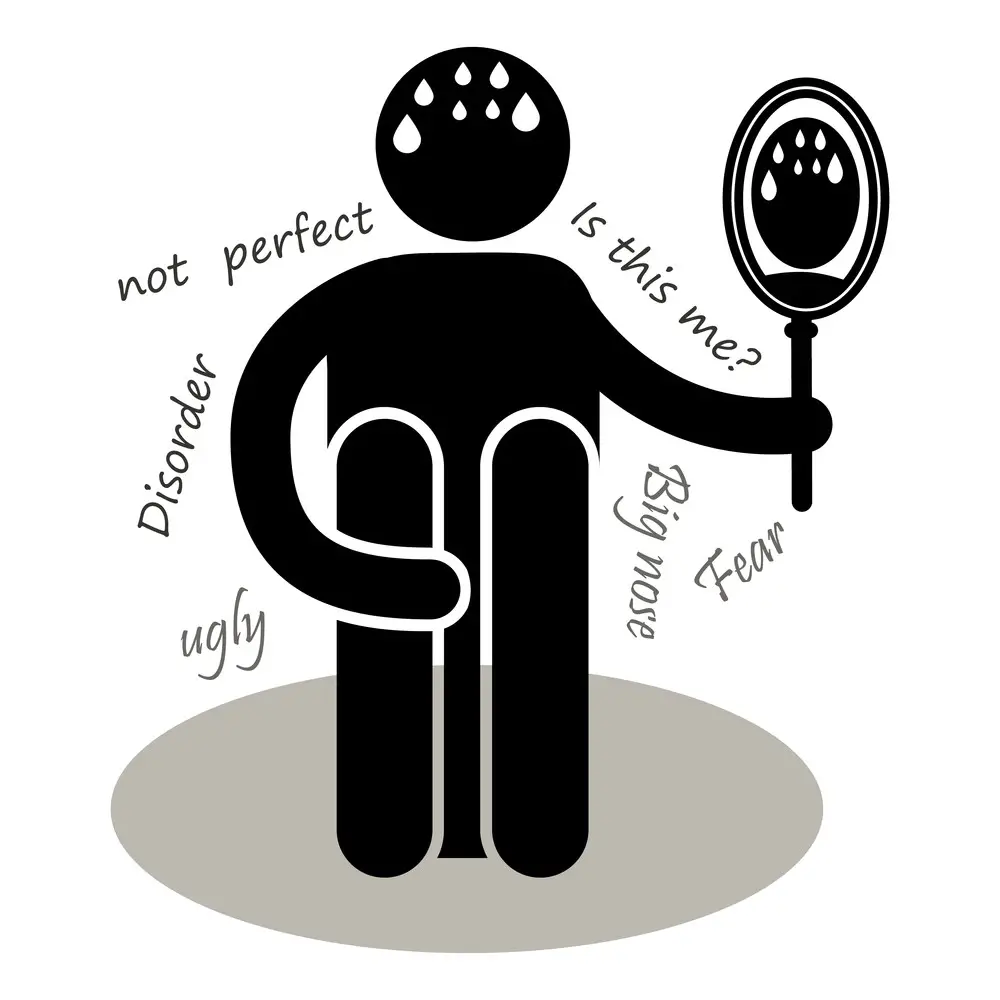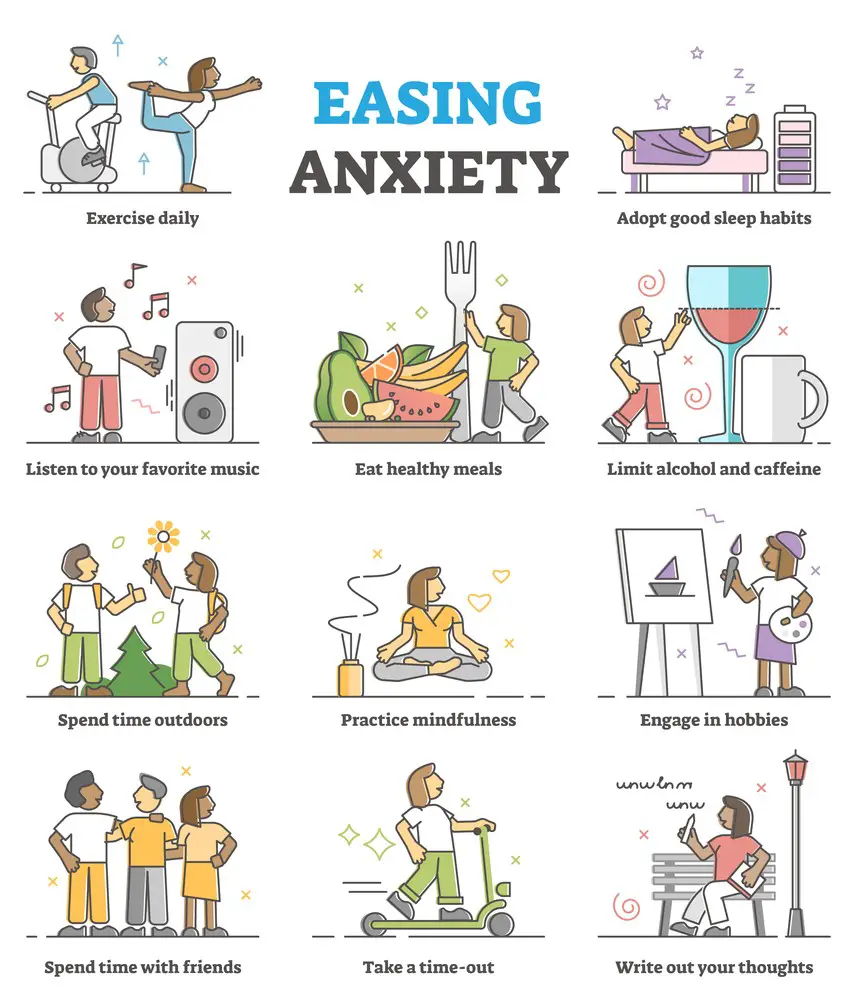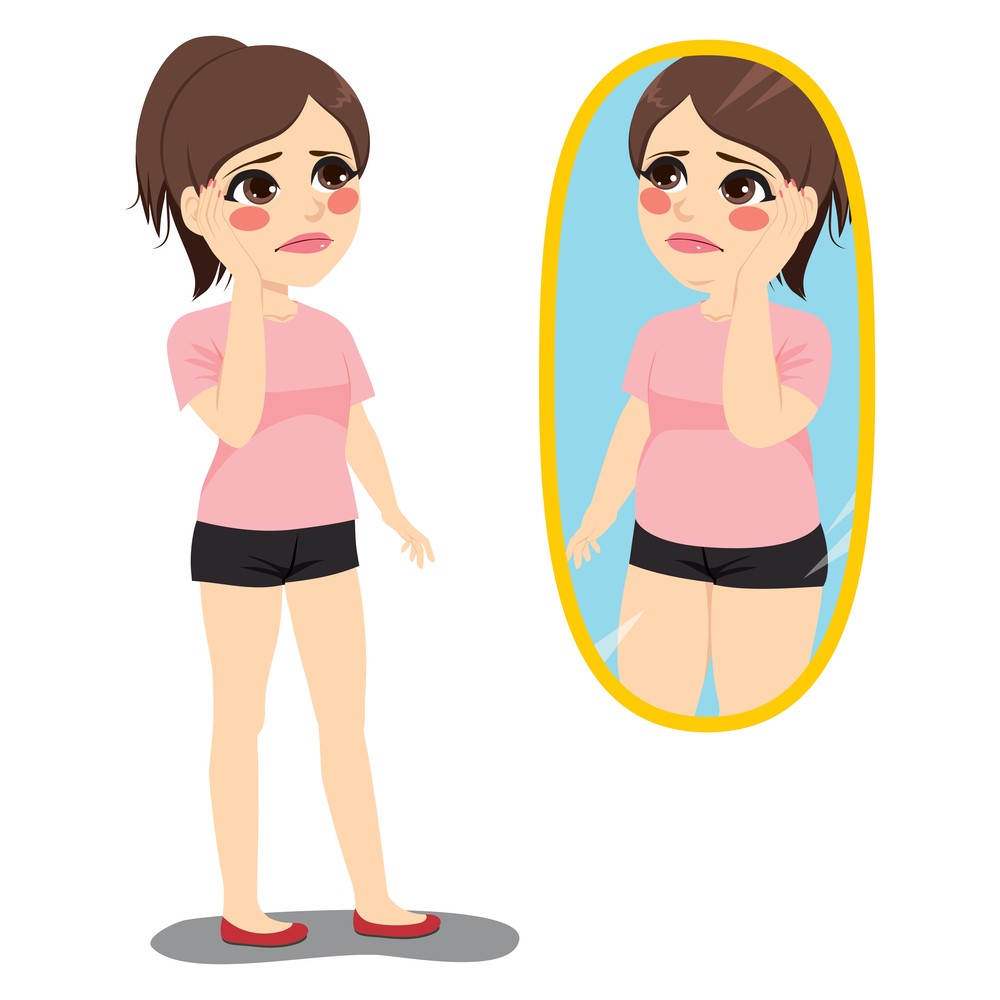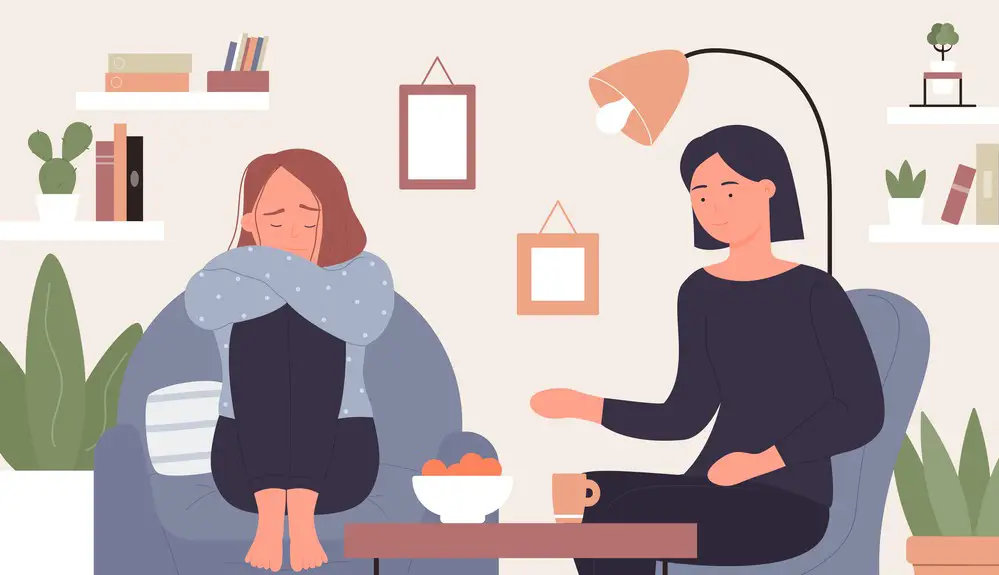As a BetterHelp affiliate, we receive compensation from BetterHelp if you purchase products or services through the links provided
Diving into the intricate relationship between social media and body dysmorphic disorder, we’ve collected wisdom from various professionals. This ensemble includes a Certified Psychology Expert and a Registered Nurse with in-depth expertise. Together, they explore six core areas—from shining a light on the “spotlight effect” to dissecting the growing problem of body image dissatisfaction—offering a multifaceted look at this often-overlooked issue.
- Intensifying the Spotlight Effect
- Contributing to a Negative Self-Perception
- Explaining the Discrepancy Between Real and Virtual
- Pressuring People With Unrealistic Standards
- Maintaining False Beauty Standards
- Exacerbating Body Image Dissatisfaction

1. Intensifying the Spotlight Effect
Social media can exacerbate body dysmorphic disorder (BDD) by intensifying the “spotlight effect,” where one may believe their appearance is constantly scrutinized. And when it comes to likes and comments, those with BDD can find their self-worth closely tied to the perceived perfection of what they publish.
Every photo posted becomes a source of intense anxiety, as they’re caught in a vicious cycle of seeking validation while fearing criticism. These platforms, filled with edited and filtered realities, can deepen their obsessive and compulsive behaviors, making self-acceptance an elusive goal.
Bayu Prihandito, Certified Psychology Expert, Life Coach, and Founder, Life Architekture

2. Contributing to a Negative Self-Perception
Social media can significantly impact body dysmorphic disorder by exacerbating the symptoms and contributing to negative self-perception. One significant impact is the constant exposure to carefully curated and filtered images of idealized beauty standards on platforms like Instagram.
People with BDD often engage in excessive self-scrutiny, and when they see these “perfect” images, it reinforces their distorted beliefs about their flaws. The comparative nature of social media can lead to increased anxiety, depression, and dissatisfaction with one’s appearance, all of which are core features of BDD.
Additionally, the ability to constantly seek validation through likes, comments, and followers can create a cycle of seeking external approval to alleviate internal insecurities, which can be detrimental to those with BDD.
While social media offers many benefits, it can adversely affect individuals with BDD, intensifying their symptoms and challenges related to body image.
Rhianna Jones, Registered Nurse, CanXida
3. Explaining the Discrepancy Between Real and Virtual
First, we’re bombarded with all these images of total perfection—no wrinkle or stray hair in sight! Smooth skin, slim figures, flattering angles. Of course, most are Photoshop or poses. I mean, who would post unflattering pics, right?
But our human brains see “beautiful.” We subconsciously start thinking, “Wow, that’s what pretty looks like.” The exaggerated ideals seep in.
Then we stare at candid, awkward snaps of ourselves first thing in the morning or slumped on the couch. We obsess over the tiniest “flaws” in the harsh lighting. Suddenly, we’re comparing our behind-the-scenes bloopers to someone else’s highlight reel. No wonder we start feeling “ugly” in comparison!
Here’s the thing, though—when do you see anybody looking Instagram-flawless in real life? At the grocery store or school drop-off, we look like everyday people. So, there is a discrepancy!
Sophia Victoria, Editor and Founder, Sophiv.com
4. Pressuring People With Unrealistic Standards
Social media has added a lot of pressure on many young people, especially women, regarding cosmetics and weight. Nowadays, the standard of beauty for women is less than 100 lbs, full lips, no wrinkles, and large hips and breasts.
Nabil Salib, Urgent Care Specialist, MyDoc Urgent Care

5. Maintaining False Beauty Standards
Social media affects body dysmorphic disorder (BDD). Maintaining false beauty standards has a significant impact.
Social media is full of edited beauty ideals. Continuous exposure to these photos can worsen BDD symptoms by making people compare themselves to unachievable ideals. This can increase feelings of inadequacy, self-consciousness, and body dissatisfaction.
In addition, the interactive nature of social media enables immediate feedback, which can be positive or negative. Negative comments or comparisons can exacerbate the distress of those with body dysmorphic disorder (BDD).
Raising awareness about the potential adverse effects of social media on mental health is significant. It’s essential for individuals struggling with BDD to seek professional help and consider limiting their exposure to exaggerated beauty standards on social media to promote a healthier self-image and overall well-being.
Dr. Jennifer Silver, CEO, Owner, and Dentist, Macleod Trail Dental
6. Exacerbating Body Image Dissatisfaction
One significant impact of social media on body dysmorphic disorder (BDD) is worsening body image dissatisfaction. Social media platforms are saturated with carefully curated images of individuals, often altered through filters, photo editing, and selective posting.
This constant exposure to idealized and often unattainable beauty standards can significantly worsen BDD symptoms. Individuals with BDD have an obsessive focus on perceived flaws or imperfections in their appearance.
Social media can intensify these obsessions by constantly presenting flawless and highly retouched images. Comparing oneself to these unrealistic standards can increase anxiety, depression, and low self-esteem for those with BDD.
Moreover, the ability to easily edit and filter photos on social media can fuel the belief that a perfect appearance is attainable, further perpetuating the disorder.
Bruno Gavino, Founder and CEO, CodeDesign

Tips for Better Understanding the Impact:
- Be Critical Consumers: Remember that what you see online is often a carefully curated image, not the full picture.
- Seek Professional Help: If you’re struggling with body image or BDD, consider contacting a mental health professional for support.
- Limit Exposure: Consider reducing time spent on social media platforms that trigger negative self-perception.
Key Takeaways:
- Intensifying the Spotlight Effect: Social media amplifies feelings of being under constant scrutiny, aggravating symptoms of BDD.
- Contributing to a Negative Self-Perception: Platforms like Instagram serve a buffet of idealized images, leading to a harsher self-critique.
- Explaining the Discrepancy Between Real and Virtual: Our offline selves rarely match the polished, edited versions we see online, creating a chasm between reality and virtuality.
- Pressuring People With Unrealistic Standards: Social media sets sky-high beauty norms that are often unattainable, piling stress.
- Maintaining False Beauty Standards: The relentless stream of edited photos fosters unrealistic ideals, exacerbating body dissatisfaction.
- Exacerbating Body Image Dissatisfaction: Constant exposure to “perfect” images fuels an unhealthy focus on perceived flaws.
Navigating the labyrinth of social media’s impact on mental health isn’t easy, but arming yourself with expert insights is an excellent place to start.
How to Be Critical Consumers of Social Media Content
Tips:
- Question Before You Scroll: Whenever you see an image that evokes strong feelings—good or bad—ask yourself, “Is this real?” A quick moment of reflection can offer valuable perspective.
- Research the Influencer: Know who you’re following. Some influencers are transparent about their use of filters and photo editing, which can provide context for what you’re seeing.
- Educate Yourself: Many resources shed light on social media’s impact on mental health. Knowing is half the battle!
Strategies:
- Set a Daily Limit: Allocate a specific amount of time for social media use daily, and stick to it.
- Curate Your Feed: Remove or mute accounts that make you feel inadequate or stressed. Follow accounts that enrich your life and mindset.
How to Limit Exposure to Triggering Content
Tips:
- Identify Triggers: List topics, hashtags, or influencers that consistently make you anxious or dissatisfied.
- Use Built-in Features: Many social platforms have features to limit screen time or mute specific content.
Strategies:
- Scheduled Breaks: Choose a day of the week when you go social media-free.
- Notification Settings: Adjust your phone settings to lessen the number of social media notifications, reducing the impulse to check your feed constantly.

Clear Signs That Therapy is Needed
Recognizing when to seek professional help is crucial to improving mental health. Here are some indicators that you may benefit from therapy:
Symptoms:
- Increasing Obsession: Spending excessive time in front of the mirror, checking for imperfections.
- Social Withdrawal: Avoiding social situations due to extreme self-consciousness about your appearance.
- High Anxiety Levels: Persistent worrying about body image to the point that it disrupts your daily life.
Behavioral Clues:
- Seeking Excessive Reassurance: Constantly asking friends or family how you look or seeking validation through social media.
- Avoidance Tactics: Refusing to appear in photos or engage in video calls.

Goals for Therapy
Having clear objectives for therapy can help make the process more effective.
Primary Goals:
- Improve Self-Perception: Working to correct distorted thoughts and beliefs about your appearance.
- Coping Strategies: Learning methods to manage anxiety and other emotional reactions related to BDD.
- Social Skills: Gaining the confidence to navigate social situations without overwhelming anxiety about appearance.
Secondary Goals:
- Mindfulness: Practicing techniques to be present and not hyper-fixate on imperfections.
- Balanced Media Consumption: Learning how to interact with social media in a way that doesn’t exacerbate symptoms.
Monitoring Progress in Therapy
Keeping track of how you’re doing is essential to ensure the therapy is effective.
Methods:
- Regular Check-ins: Most therapists will have some form of routine assessment to evaluate how well the treatment plan is working.
- Journaling: Keeping a record of emotional states, triggers, and progress can be incredibly insightful.
Signs of Progress:
- Reduced Anxiety: A noticeable decrease in daily stress and worry related to body image.
- Improved Social Interaction: Engaging in social settings without excessive concern about appearance.
- Healthier Online Behavior: Spending less time on social media platforms that trigger negative self-perception.
By staying aware of these guidelines and actively participating in the therapeutic process, you can make significant strides in managing the symptoms of body dysmorphic disorder. Remember, it’s a journey that requires time and effort, but the end goal is well worth it—better mental health and a happier you.
Jacob Maslow
After surviving the traumatizing events of 9/11, I took it upon myself to heal through helping others. I’m the primary caregiver of my children and understand from first-hand experience the lonely paths you have to walk as a partner and parent when leaving an unhealthy relationship.
We’re all echoing in a dark space that doesn’t have to be this empty, and that’s been my mission since finding solace and recovery in therapy: To help comfort others who are still in shock and at the prime of their struggle.
I came across BetterHelp after searching for this type of community. I wanted to belong to a body of proactive therapists and supportive therapy veterans that allowed me to see other sides of the story.
It was unconventional, and that’s what attracted me most. During my most challenging times, when my ex-wife completely cut me off from my children, I found comfort and clarity through BetterHelp.
Instead of being chained to a strict therapist recommendation, I was in charge of who I felt understood my struggle most. That allowed me to find my true peace, as I was reunited with those who read behind my words and had first-hand experience with my trauma.
Recovery is a choice; with BetterHelp, that choice will be a few clicks away. You can join their couples-oriented platform, Regain.us, for those stuck with family estrangement and toxic relationship patterns.
- 3 Ways Wearing a Hat Can Help Lower Your Stress Levels - April 19, 2025
- Breaking the Silence: Why Men’s Mental Health Matters More Than Ever - April 15, 2025
- How to Transform a Home’s Patio Space into a Relaxing Space - March 23, 2025
This site contains affiliate links to products. We will receive a commission for purchases made through these links.



